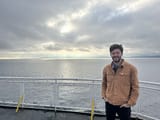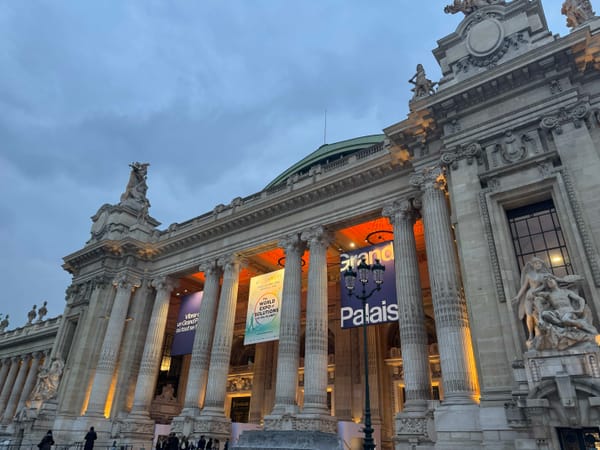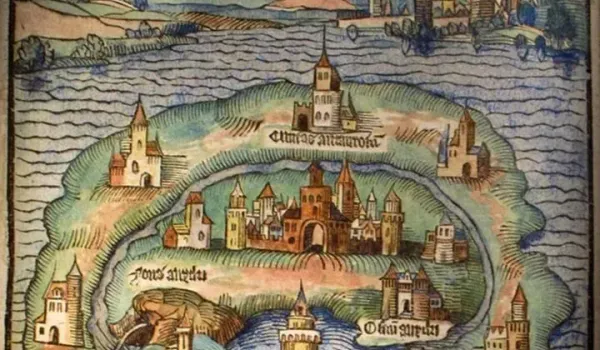A Letter from Lake 22
As the June sous-viding of the District of Columbia began in earnest, I seized a chance to flee the city-state for a cooler climate and set off with eyes unaccustomed to towering greenery. The destinations: lake country north of Seattle, then the southern coast of Vancouver Island.

As the June sous-viding of the District of Columbia began in earnest, I seized a chance to flee the city-state for a cooler climate and set off with eyes unaccustomed to towering greenery. The destinations: lake country north of Seattle, then the southern coast of Vancouver Island.
No great headlines emerged in Seattle. After an upbringing with plenty of Frasier reruns I was disappointed to find no rain, no fish thrown across Pike Place, in fact not a single leaf of tossed salad nor any scrambled eggs. But that wasn’t the destination, so no matter.
But north of the city, great walloping mountains stand at the horizon around every corner. The greatest peaks, like Mt. Baker which can be seen clearly in both Washington and that foreign island across the Strait of Juan De Fuca, bear just enough snow to impress even in the middle of summer. The weather never heats past eighty degrees, rarely approaching even that mark.
We put our roots down at a cabin nestled in wilderness. The green shade of mossy trees towers over ferns and huckleberry bushes, an island of native greenery surrounded by mown lawns. As east coast workers, we did our best to rise with the light and maintain an eastern standard workday, the six to two as we called it. Afternoons free for activity compensated for yawning early mornings.
The major adventure was a hike to Lake Twenty-two, a few miles and a couple thousand feet up Mount Pilchuck. These sorts of mountains impose on the distant skyline but become shy on approach, hiding behind curtains of forest that swish by revealing only glances at the looming tectonic megastructure.
Something must be said about mountain thermodynamics. Depending on the day and time, Lake Twenty-two can easily be 15° F colder than the trailhead down below. By God there’s snow up there and though I’m no doctor, I’m fairly certain that snow needs to be kept cold. However, that potential chill must be taken with a grain of salt. A rule of thumb: prepare for weather ten degrees warmer than the number on the thermostat to compensate for heat produced on the climb. A foolish hiker only learned this rule after leaving his shorts in the car and wearing canvas work pants that slowly poached his lower half.
After a delightful ascent full of trees of massive character and age, wild-foraged blue and blackberries, some mildly treacherous rocky stretches and a half dozen waterfalls ranging from roaring three-story crashers to small zen trickles, the hiker finds himself and his companions on the shore of a lake higher than he’d previously thought possible. Boardwalk trails horseshoe the water, which itself is fresh clear glacier-melt. On the far side the next rise of the mountain shoots up sharply, pocketed with ice-filled nooks and crannies deep and still enough to refrigerate. Sweat at this altitude is quickly air conditioned, even for the foolish hiker.
Along the curves of the lake, summiteers rest and breathe in pristine air. Bags of trail mix are passed around, photos are taken. A chipmunk skitters about. An elderly couple lean on their hiking poles. The only disturbances to the water are brave hands and toes interrupting the surface to confirm it is, in fact, cold. A woman in tactical black walks by with a pistol sticking from the waistband of her leggings. The tranquility and remote natural wonder dampen somewhat.
With ice-melt rushing from Lake Twenty-two down the slopes of Mount Pilchuck and a Chekovian incarnation walking by, the novice hiker finds himself wondering whether it is possible to truly escape into nature, or if, in fact, humanity’s opposable grasp is all-encompassing after all. But those concerns quickly evaporate at the prospect of a hearty cheeseburger somewhere beyond the mossy descent.





